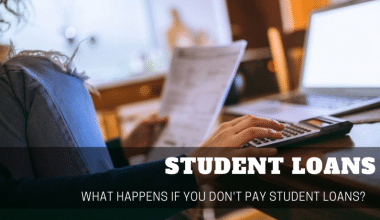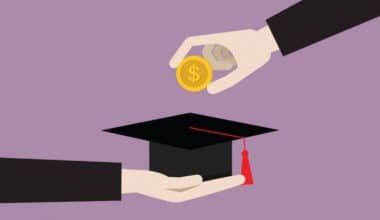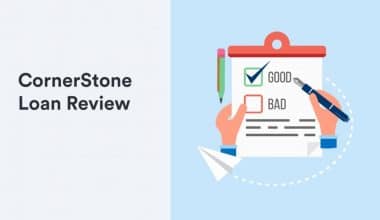Student loans can be a major burden on those who don’t know how to manage them. There are many different types of loans and some come with more favorable conditions than others. Here, we’ll take a look at two of the most common types which are subsidized and unsubsidized student loans.
Subsidized loans are those where your interest is paid for by the government during the time you’re in school.
Unsubsidized loans are not subsidized by the government so you have to pay for your own interest while in school or after graduation. Some people also confuse subsidized and unsubsidized student loans with Perkins Loans, but these are not quite the same thing.
This article will cover everything you need to know about subsidized vs
unsubsidized.
What Are Subsidized And Unsubsidized Student Loans?
As the name suggests, a student loan is a loan that is subsidized by the government. These are loans for individuals who are from low to middle-income families and are interested in a degree in a qualifying field.
Student loans are typically unsubsidized but can have a small interest rate applied while in school or during the first years of repayment. This is because you’re helping to lower the overall cost of an education. Subsidized loans are generally better than unsubsidized loans because you’re paying less in interest during your schooling years.
To be eligible for a subsidized loan, you must be enrolled in a qualifying educational institution. Most people with student loans have unsubsidized loans, so this is what you need to know before you apply for your own.
What Are Subsidized Loans?
A subsidized loan is a loan that does not accrue interest while you are in
school.
In the US, most undergraduate students at public colleges and universities are eligible to apply for subsidized Stafford loans. These loans have a fixed interest rate of 3.76%. If you borrow in the current academic year, your loans will be disbursed before classes start.
The money will be placed into your bank account, and you can decide when to begin repayment.
A major advantage of federal student loans is that they’re tax-exempt. It doesn’t matter what income level you have.
That means that if you are self-employed, and you make $15,000 a year, then you won’t pay any taxes on that income. You can use that money for higher education and you don’t have to pay interest.
What Are Unsubsidized Loans?
Unsubsidized loans are basically loans that you take out for your own education.
You can use unsubsidized loans for both undergraduate and graduate studies. For example, you can go to school and receive loans from private lenders for your undergraduate studies, but then you’ll need to start making payments to the government once you get into graduate school. This is where the term “subsidized” comes into play.
The government subsidizes the interest rate for some unsubsidized student loans. This means that your loans will still have interest, but they will be more affordable. The size of your loans will still increase, but you’ll be able to afford those payments.
Subsidized Vs Unsubsidized Student Loans
When it comes to whether a student loan is subsidized or unsubsidized, the question gets quite complex, but it’s actually pretty simple.
The basic difference between the two is that with a subsidized loan, you have to pay interest. With an unsubsidized loan, you don’t. Here’s a simple example: let’s say that you go to college on a subsidized loan.
After graduation, you work for three years and decide to go to grad school at the University of Arizona. Your subsidized loan still has three years left on it, so you’ll pay interest until it expires.
After three years, the university will loan you the money you need for school and you’ll pay them back at a lower interest rate for a few years. When your subsidized loan is finished, you’ll be able to pay your regular student loan.
The Pros and Cons of Each
The two types of student loans are comparable in some ways. For instance, both subsidized and unsubsidized students loans are available for those who are pursuing a bachelor’s degree or higher.
However, these aren’t the only two options. For instance, there are different types of federal student loans that will cover your tuition and your living expenses in a particular institution. For those who need a flexible financial plan, such as those who want to go back to school, there are private student loans that can be especially helpful.
As you might expect, there are advantages and disadvantages to each of the different student loan options. Below, we’ll explore the pros and cons of each of the types.
Understanding Interest Rates for Subsidized and Unsubsidized Student Loans
Before we get into which loans are best for you, it’s important to understand how the interest rates work on each. When you first apply for subsidized loans, the interest rate you’ll end up paying is typically less than 5%.
However, there are special requirements that determine the interest rate you end up paying. If you go to a school with a loan repayment period of more than four years, the interest rate you will be charged depends on your credit score.
The higher the credit score, the higher the interest rate you will pay. Once you’re in school for 12 or more years, your interest rate will be capped at 6%.
You may pay higher interest on your unsubsidized loans if you miss payments.
How to Apply for Subsidized and Unsubsidized Student Loans?
Subsidized Loan:
Student loans are only for students, but there are situations where a parent or a guardian may apply on behalf of their child. The same is true for borrowers who have already finished college and want to consolidate their student debt.
In either case, the process is pretty similar: after the borrower has gathered all the necessary documents and information, the loan provider writes an application and sends it to the student loans servicing center.
They will then review your application, check your eligibility and send you a notification about your approved or denied loans.
Unsubsidized Loan:
Applying for student loans may seem like a confusing process, especially if you are looking for an unsubsidized loan. But don’t worry; here are some tips to help you secure the money to pay your tuition and more.
The first thing you want to do is to get and fill out the Free Application for Federal Student Aid. This form is used by all schools to determine how much federal student aid you will be eligible to receive. It will also be used by the lender when you finally get approved and choose which loan provider you want to go with.
When Should You Get A Subsidized Loan?
Here are two main periods in which you can get a subsidized loan:
1. Early in your studies when you want to go to school in a less expensive school
2. Even before you’ve finished your degree what Are Subsidized And Unsubsidized Student Loans?
If you don’t choose one of these two options, you will have to pay for your interest yourself throughout your studies. By the time you finish your studies, you’ll be at the maximum monthly loan repayment.
You may want to think about a loan even before you finish your studies. If you’re sure you’ll want to do the whole thing and want to minimize the cost, then you should take the loan before you finish your studies.
It might be a better option to consolidate all your student loans into one because then you’ll be saving money from month to month.
When Should You Get An Unsubsidized Loan?
The best time to get an unsubsidized loan is before you need it. While there are many scenarios where a student loan is the better option, they do have some negatives.
Unsubsidized loans are not based on financial need and do not have any interest subsidies. This means that borrowers are responsible for paying the interest while they’re in school.
If you don’t pay, your loan will accrue even more interest, which could put you in a financial bind.
Subsidized and Unsubsidized Loan: Which is the Best?
Is this as straightforward as it sounds? Let’s first take a look at the differences between these types of loans.
If you’re reading this article, you probably already know how to handle a bank loan, a car loan, and other types of borrowing.
You don’t need to be any less familiar with student loans, but there is more to the story than the usual “borrower pays the loan amount for a fixed period of time.”
Subsidized loans have the U.S. government paying part of the interest you pay while you’re in school. This makes them sound like a godsend, but there are some major caveats to consider.
The main difference between subsidized and unsubsidized loans is how long you have to pay back your debt.
Subsidized Loan and Unsubsidized Loan: Which One Should You Go For?
Subsidized student loans are the best option for students to pay for their college education. These types of loans are given to those students who have financial needs and are unable to pay their college or university tuition.
Students from low-income families can take advantage of these types of loans by applying for them at the beginning of their academic years.
Conclusion
It’s important to take note of the difference between subsidized and unsubsidized student loans and understand the important differences between the two.
In the end, the choice will depend on your financial situation and the kind of education you’re pursuing.
The good news is that all of these loans are a quick way to pay for your education. The bad news is that it takes time to pay off your student loan debt.
That being said, there’s no right or wrong answer for which loan is the best for you. It’s better to get the loan you qualify for, but don’t assume that because you qualify, it will be the best for you.
It’s always better to go in with a plan of attack and do some research before signing any loan documents.
To sum it all up, a good estimate would be that if you work full-time and do the math, you’ll be saving over $300 every month. That’s not to mention the future student loan interest you’ll save by going this route.
There are many reasons to go for this route: It’s the best loan for someone in your position, and you have the lowest debt in your life when you leave. The Department of Education has a lot of information on student loans on its website.
They have resources and helpful programs for those trying to find the best option for themselves. Make sure to check out their website and resources, and then get out there and go forth to make the decision for yourself.





